Related Research Articles
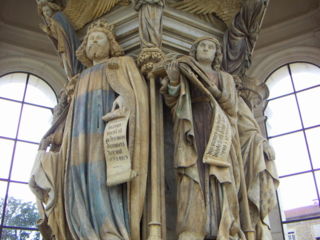
Claus Sluter was a Dutch sculptor, living in the Duchy of Burgundy from about 1380. He was the most important northern European sculptor of his age and is considered a pioneer of the "northern realism" of the Early Netherlandish painting that came into full flower with the work of Jan van Eyck and others in the next generation.

International Gothic is a period of Gothic art which began in Burgundy, France, and northern Italy in the late 14th and early 15th century. It then spread very widely across north-western and central regions of Europe, hence the name for the period, which was introduced by the French art historian Louis Courajod at the end of the 19th century.
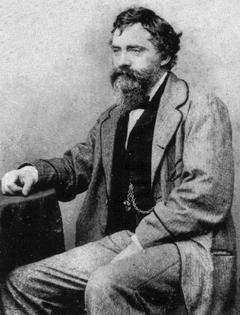
Thomas Gambier Parry, J.P., D.L., was a British artist and art collector. He is best remembered for his development of the Gambier Parry process of fresco painting, and for forming the significant collection of early Italian paintings and objects that his heirs gave to the Courtauld Institute of Art in London, where many are displayed in the Courtauld Gallery.

Gothic art was a style of medieval art that developed in Northern France out of Romanesque art in the 12th century AD, led by the concurrent development of Gothic architecture. It spread to all of Western Europe, and much of Northern, Southern and Central Europe, never quite effacing more classical styles in Italy. In the late 14th century, the sophisticated court style of International Gothic developed, which continued to evolve until the late 15th century. In many areas, especially Germany, Late Gothic art continued well into the 16th century, before being subsumed into Renaissance art. Primary media in the Gothic period included sculpture, panel painting, stained glass, fresco and illuminated manuscripts. The easily recognizable shifts in architecture from Romanesque to Gothic, and Gothic to Renaissance styles, are typically used to define the periods in art in all media, although in many ways figurative art developed at a different pace.

The Courtauld Gallery is an art museum in Somerset House, on the Strand in central London. It houses the collection of the Courtauld Institute of Art, a self-governing college of the University of London specialising in the study of the history of art.
The Annunciation is an oil painting by the Early Netherlandish master Jan van Eyck, from around 1434–1436. The panel is housed in the National Gallery of Art, in Washington D.C. It was originally on panel but has been transferred to canvas. It is thought that it was the left (inner) wing of a triptych; there has been no sighting of the other wings since before 1817. The annunciation is a highly complex work, whose iconography is still debated by art historians. It was bought by the Tsar of Russia for the Hermitage Museum, but was sold by Stalin's government in 1930.
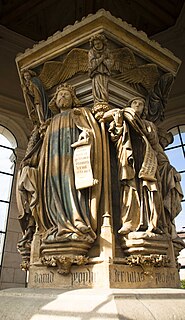
The Well of Moses is a monumental sculpture recognised as the masterpiece of the Dutch artist Claus Sluter (1340–1405–06), assisted by his nephew Claus de Werve. It was executed by Sluter and his workshop in 1395–1403 for the Carthusian monastery of Chartreuse de Champmol built as a burial site by the Burgundian Duke Philip the Bold just outside the Burgundian capital of Dijon, now in France.
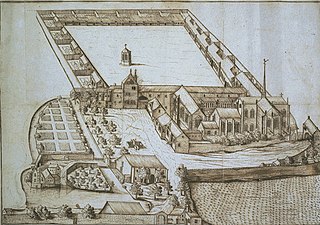
The Chartreuse de Champmol, formally the Chartreuse de la Sainte-Trinité de Champmol, was a Carthusian monastery on the outskirts of Dijon, which is now in France, but in the 15th century was the capital of the Duchy of Burgundy. The monastery was founded in 1383 by Duke Philip the Bold to provide a dynastic burial place for the Valois Dukes of Burgundy, and operated until it was dissolved in 1791, during the French Revolution.
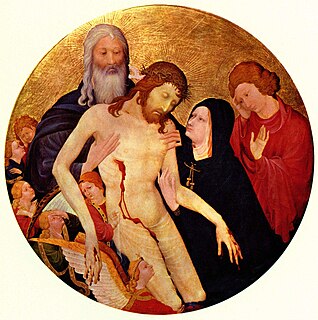
Jean Malouel, or Jan Maelwael in his native Dutch, was a Dutch artist who was the court painter of Philip the Bold, Duke of Burgundy and his successor John the Fearless, working in the International Gothic style.
Thomas Sherrer Ross Boase was a British art historian, university teacher, and Vice-Chancellor of Oxford University.

André Beauneveu was an Early Netherlandish sculptor and painter, born in the County of Hainaut, who is best known for his work in the service of the French King Charles V, and of the Valois Duke, Jean de Berry. His work in all media shows a generally naturalistic and 'sculptural' style, characteristic of the 'Pucellian revival' of the latter 14th century.
Otto Pächt was an Austrian art historian and one of the representatives of the second wave of the Vienna School of Art History. He mostly wrote on the medieval and Renaissance art of Europe. An exile from the Nazis, he taught in England and United States, before returning to Austria in 1963.

The Mourners of Dijon are tomb sculptures made in Burgundy during the late fourteenth and early fifteenth centuries. They are part of a new iconographical tradition led by Claus Sluter that continued until the end of the fifteenth century. In this tradition, free-standing sculptures depict mourners who stand next to a bier or platform that holds a body in state. The figures are cloaked in robes which mostly hide their faces.
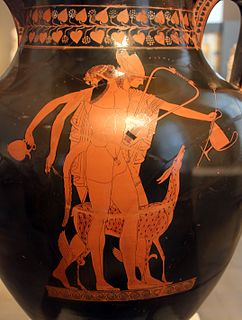
In art history, a Notname is an invented name given to an artist whose identity has been lost. The practice arose from the need to give such artists and their typically untitled, or generically titled works, an acceptable if unsatisfactory grouping, avoiding confusion when cataloging. The phrases provisional name, name of convenience and emergency names are sometimes used to describe anonymous masters; nonce name was at one time used.
Jonathan James Graham Alexander, FBA, known in print as J. J. G. Alexander, is a medievalist and expert on manuscripts, "one of the most profound and wide-ranging of all historians of illuminated manuscripts".

The Tomb of Philip the Bold is a funerary monument commissioned in 1378 by the Duke of Burgundy Philip the Bold for his burial at the Chartreuse de Champmol, the Carthusian monastery he built on the outskirts of Dijon, in today's France. It was designed and built by Jean de Marville, head of the duke's sculptural studio, who designed and oversaw the building of the charterhouse. Marville began work on the tomb in 1384, but progress ed slowly until his death in 1389. That year Claus Sluter took over design of Champmol, including the tomb. Philip died in 1402 with his funerary monument still very much incomplete. After Sluter's death c. 1405/06, his nephew Claus de Werve completed the project in 1410.
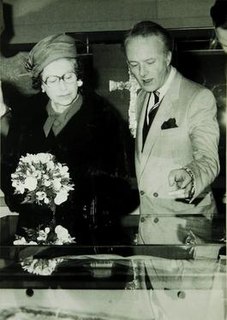
Derek Howard Turner was an English museum curator and art historian who specialised in liturgical studies and illuminated manuscripts. He worked at the British Museum and the British Library from 1956 until his death, focusing on exhibitions, scholarship, and loans.
Dillian Rosalind Gordon OBE is a British art historian who worked as a curator at the National Gallery, London from 1978 to 2010, latterly as Curator of Italian Paintings before 1460. She lives in Oxford. She was appointed OBE in 2011 for services to Early Italian Painting. She has authored and co-authored many books, including several National Gallery catalogues.
Elżbieta Temple, properly Elżbieta Klewin née Malcz, was a scholar and writer specialising in the field of illuminated manuscripts who produced two books, the second co-authored with J. J. G. Alexander.
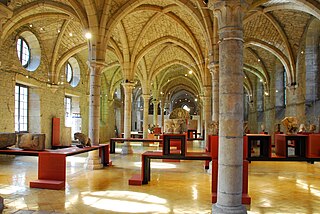
The Musée Archéologique de Dijon is an archaeology museum focusing on the archaeology of Burgundy that was founded in 1832 in Côte-d'Or within Dijon, France. It contains collections regarding "the men of Burgandy" that covers the periods of prehistory, protohistory, the rule of Ancient Rome, and the Middle Ages as well as collections of paleochristian art, sacred art, and church architecture. The museum's collection and location have been housed since 1934 in the main wing of the Abbey of St. Bénigne, situated next door to the Dijon Cathedral.
References
- ↑ Susie Nash. The Courtauld Institute, 2013. Retrieved 21 April 2013. Archived here.
- ↑ Nash, S., ‘Claus Sluter’s Well of Moses for the Chartreuse de Champmol reconsidered,’ Parts I, II and III, The Burlington Magazine, vol 147 (2005), pp. 798-809; vol. 148 (2006), pp. 456-467; vol. 150 (2008), pp. 724-741